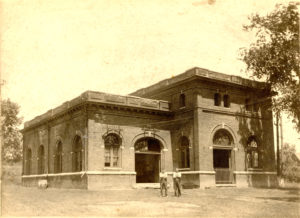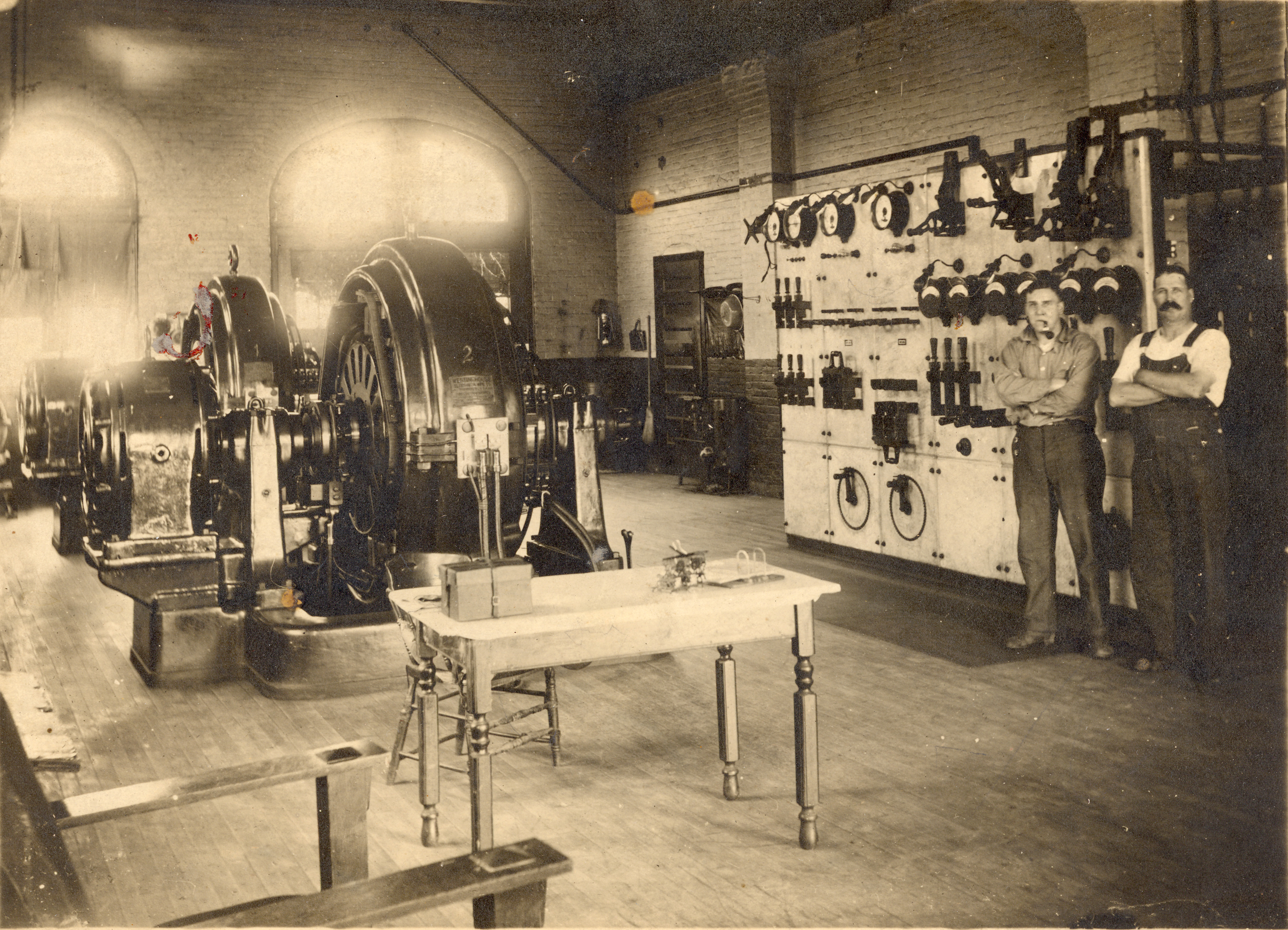At 3:48pm, on Monday the 14th of November, 1910, Port Byron became the “best lighted village in the state.” It was likely not too bold a claim, as it was the latest village in the state to have installed street lights, eighty in total. Although the village had been discussing the idea of providing electricity for some time, it was then building of the Rochester, Syracuse, and Eastern Interurban trolley that made this grand event possible. How was that? The all electric trains ran on DC or direct current, which they received from overhead power lines that were strung up along the railroad. Since the DC power was only good for spans of about five miles, power stations were spaced along the railroad10 miles apart. In this way, no trolley car was more than 5 miles from a source of DC power. These local power stations were supplied by high voltage AC electricity from a large coal fired power plant located near Lyons. AC electricity can travel hundreds of miles with little loss, and is why power made in Niagara Falls can be used in New York City. Anyhow, luckily for Port Byron, one of these small trackside power stations happen to land right in the village. And since the power plant made more electricity then the trolleys could use, excess was sold to the villages along the trolley route. With this ready source of electricity handy, all the village had to do was put up some poles, run some wire, and hang some lights.

Calling Port Byron the best lighted village was a turn of a phrase, as all that the village had was street lights. None of the of the homes and businesses were wired up and ready to make use of the power. The newspaper noted that men from the Village owned electric department would be going around speaking with every homeowner explaining what it would cost to run wires so each homeowner could have their own electric lighting. And electric light was the main selling point. In many examples, the electric company is called the lighting company, or the electric light plant. The ability to have electric lights was the trans-formative invention of the day. No longer would you need to have candles and kerosene lamps. The risk of fire was greatly reduced if the homeowner switched out their lamps for the glow of the electric bulb. In fact, electric receptacles were not part of the early wiring. Once the house was wired for lights, if the lady of the house wished to have an electric appliance, say an electric fan, iron, or vacuum cleaner, they would have to screw the cord into a nearby light socket to get power. Many can likely recall the old fashion screw in adapters so that the light socket could power a radio or appliance.
The paper noted that the trolley company ran 24 hour service, so power was available at all hours. Except, of course, between the hours of 12:30 am to 4 am, when the electricity was turned off after the last trolley returned to its barn. Interestingly, the paper also noted that the street lights would not be turned on on nights with a full moon. Later someone wrote that after the lights went off, the village folded up for the night, which proves that things haven’t changed too much in the last 100 years. After the RS&E went out of business in 1931, the New York State and Gas Company purchased the generating station and wires, and started to provide 24 hour service. If service had to be performed on the electric grid, the entire village system would be shut down as there was no way to turn off a selected area. But this was never done on Monday or Tuesday mornings which was the wash day, or quite notably, anytime that the World Series was on the radio.
The first manager of the Village owned service was Charles W. Weston, who also owned and managed the local telephone company. This appointment likely made sense as Weston’s company would have had the men and experience in maintaining the poles and wires for his phone network. After C.W. died in 1923, his son Theodore took over and managed the electric service until his retirement in 1954. Maybe it was the coming retirement of Theodore or just that the Village wished to get out of the electric business, but the system was sold to Niagara Mohawk in 1954.
These photos were from Janice Guy, whose father Earl Abbott was one of the powerhouse operators.
